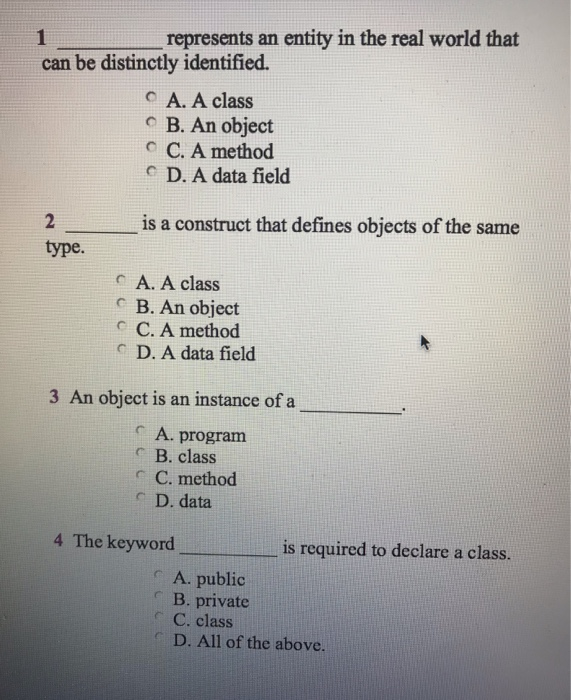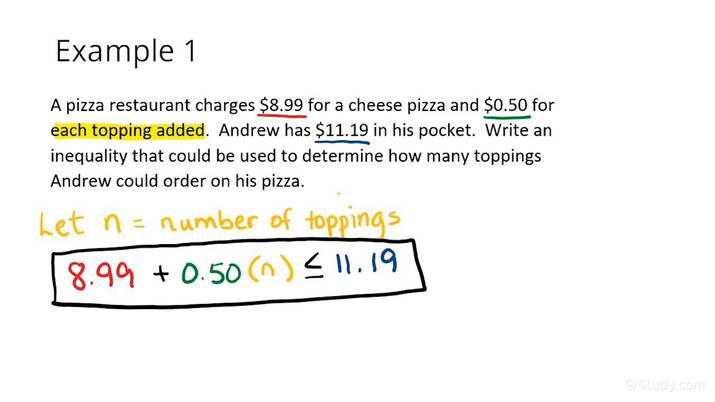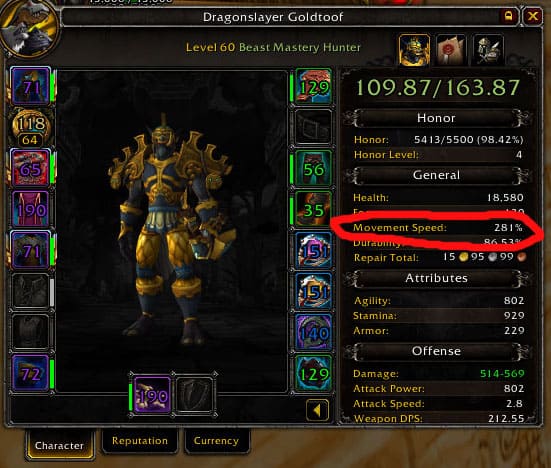An Entity Class Represents Real-world Items
An entity class is a class in object-oriented programming that represents real-world items. It is used to model real-world objects and their characteristics, such as people, places, and things. An entity class is typically composed of various attributes, such as name, age, gender, and location, which are used to represent the characteristics of the item. Entity classes are used to store data and encode the relationships between the objects. They are also used to provide access to stored data and to ensure data integrity. An entity class is essential to creating a well-structured and organized object-oriented application.
What is an Entity Class?
An Entity Class is a fundamental concept in object-oriented programming, and it is used to represent real-world items. It is a blueprint that defines the common characteristics and behavior of a group of related items. In general, an entity class can be used to model anything that can be described in terms of its attributes and behavior. For example, a vehicle entity class might have attributes such as make, model, and year, as well as behaviors like accelerate, brake, and honk. By using entity classes, developers can quickly and easily model complex systems in code.
Entity classes are a great way to organize and manage large projects. By encapsulating related attributes and behaviors into a single unit, developers can maintain a consistent structure throughout their code. This makes it easier for them to read and debug their code, as well as reduce the chances of introducing bugs. Additionally, entity classes can be reused and extended, which helps to reduce code duplication and promote code reuse.
Benefits of Using Entity Classes
Entity classes are a powerful tool for representing real-world items such as products, customers, and orders, and incorporating them into a software system. An entity class is a type of object-oriented programming construct that allows for the representation of a real-world entity in a computer program. This representation allows for the creation of objects, or “instances” of the entity class, which can be used to store and manipulate data related to the real-world entity.
Using entity classes to represent real-world items has a number of benefits. For one, it allows for the creation of a powerful data model that accurately reflects the real-world relationships between entities. This data model can then be used to create efficient software applications that can accurately represent the real-world items being represented. Additionally, entity classes allow for the creation of object-oriented software programs that are easier to maintain, as all related data is stored in one location. Finally, by using entity classes, software developers can create programs that are more easily understood, as the data model accurately reflects the real-world items being represented.
In conclusion, entity classes are an invaluable tool for representing real-world items in a software system. By using entity classes, software developers can create data models that accurately reflect the relationships between real-world entities, design efficient software applications, and create programs that are easier to maintain and understand.
Creating an Entity Class
is the practice of modeling existing real-world objects or concepts into a class. An entity class is a representation of an item in the real world, such as a person, place, or thing. It is used to capture the characteristics of the item and to define the behavior of the item. Entity classes are the foundation of object-oriented programming languages and are used in web applications, databases, and other programming languages.
An Entity Class is a powerful tool for representing real-world items. It allows developers to create a class that can store information about an item and provide functionality for manipulating the item. Entity Classes are used to create objects that can be used to represent items in a database, on a web page, or in a program. By creating Entity Classes, developers can accurately represent real-world items, allowing for a more efficient development process.
Entity Classes are also used to create relationships between objects. By creating an Entity Class for each item, developers can define the relationships between them and create an object-oriented representation of the real world. This allows developers to create robust applications that are able to accurately represent real-world items and their relationships.
Creating an Entity Class is a powerful way to represent real-world items accurately and efficiently. It can be used to create objects that accurately represent items and their relationships. Additionally, Entity Classes can be used to create relationships between objects, allowing for robust and efficient development. By using Entity Classes, developers are able to create applications that accurately represent real-world items and their relationships.

Entity Class Properties
Entity classes provide an important way of modelling real-world items, such as people, places, things, and ideas. When used correctly, they allow developers to create applications that accurately represent the world around them. Entity classes have properties that define the object they represent and provide the basis for more complex operations. Properties can be used to store data or to specify the behavior of the class. They can also be used to create relationships between objects.
Entity classes can be used to create models that accurately represent the world, as they provide a way to store data and define the behavior of the object. They can be used to create relationships between objects, as well as to store data, such as names, dates, addresses, and more. By using entity classes, developers can create applications that accurately reflect the world around them. Entity classes are an important part of creating powerful applications that accurately model the world.
Applications of Entity Classes
Entity classes are a powerful tool for structuring data and representing real-world items. A class is a blueprint or template that defines the properties and behavior of the items it represents. An entity class is a type of class that is used to represent items in the real world. Entity classes are used in a variety of applications, such as software engineering, data modeling, and database design.
In software engineering, entity classes are used to define and represent the objects in a system. This allows developers to create a structured and organized way of representing information and data within the system. Entity classes can also be used to create relationships between objects, allowing objects to interact and communicate with each other.
In data modeling, entity classes are used to create a logical model of the data that is stored in a database. This allows developers to create a more efficient way of storing and retrieving data from the database. Entity classes can also be used to create relationships between different data elements, allowing data to be related and associated.
In database design, entity classes are used to define the structure of the database. This allows developers to create an efficient and organized way of storing and retrieving data from the database. Entity classes can also be used to create relationships between different data elements, allowing data to be related and associated.
Entity classes are a powerful tool for structuring data and representing real-world items. They are used in a variety of applications to create efficient and organized ways of representing items and data. By using entity classes, developers can create organized and structured ways of representing data and items in their applications.
Limitations of Entity Classes
Entity classes are powerful tools for representing real-world items and describing their behavior. However, entity classes have their limitations that must be considered when deciding whether they are the best option for a particular application.
First, entity classes are limited in their ability to represent complex relationships between items. In many cases, a set of related items may have multiple relationships with each other, but entity classes can only represent one type of relationship.
Second, entity classes may not be able to represent all the data associated with an item. For example, if an item has several dimensions or attributes, entity classes may not be able to capture all of them.
Third, entity classes may not be able to capture the dynamic nature of an item’s behavior. For example, the behavior of an item may change over time, but entity classes may not be able to represent these changes.
Finally, entity classes may not be able to represent certain types of behavior. For example, an entity class may not be able to represent complex behaviors that require multiple steps or involve multiple items.
Overall, entity classes are useful tools for representing real-world items, but they have their limitations that must be taken into consideration. It is important to assess the needs of an application before deciding whether entity classes are the best option.
FAQs About the An Entity Class Represents Real-world Items
1. What is an entity class?
An entity class is a type of class used to represent real-world items in an object-oriented programming language. It is used to model data structures and define the relationships between them.
2. How are entity classes used?
Entity classes are used to represent the data that an application needs to store in a database or other storage system. They are also used to define the relationships between different types of data.
3. What are the benefits of using entity classes?
The main benefit of using entity classes is that they provide an organized and structured way to store and manipulate data. This makes it easier to access and modify data, as well as providing a consistent interface for interacting with the data. Additionally, entity classes make it easier to maintain and debug code.
Conclusion
An entity class is an important concept in object-oriented programming, as it can be used to represent real-world items. An entity class can be used to model complex objects, such as people or animals, or can be used to represent more abstract concepts. By using entity classes, developers are able to better model their application’s data and create a more structured environment. Entity classes can be highly beneficial when used in the right context, as they can help create cleaner, more maintainable code.






